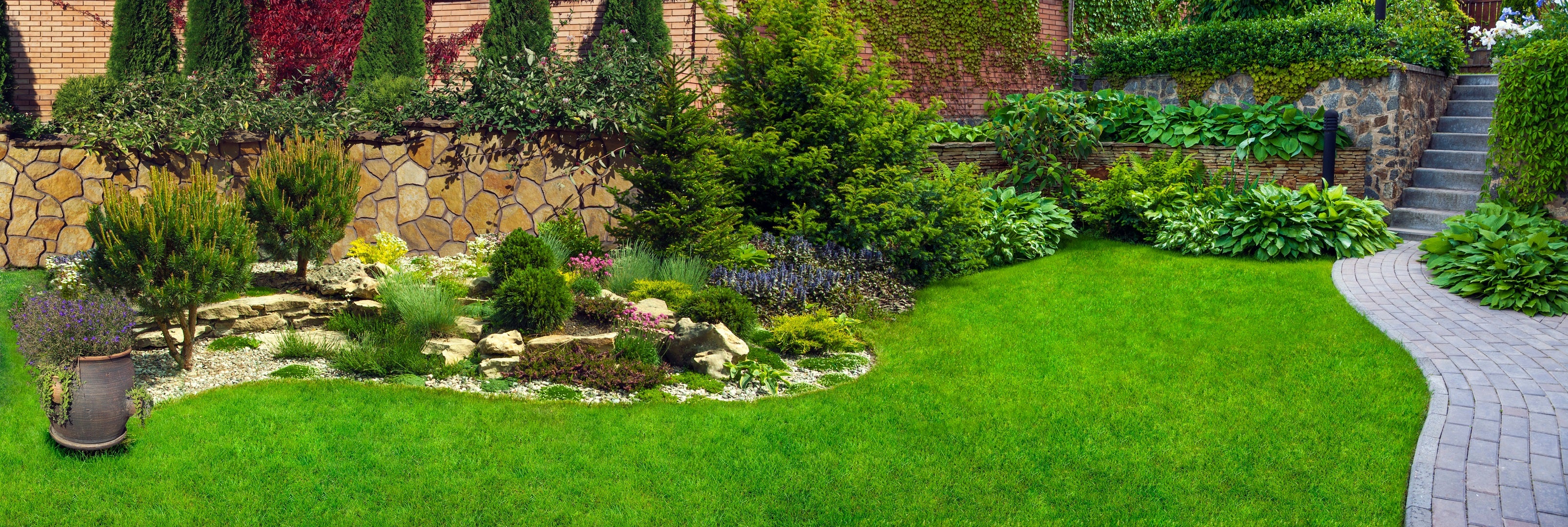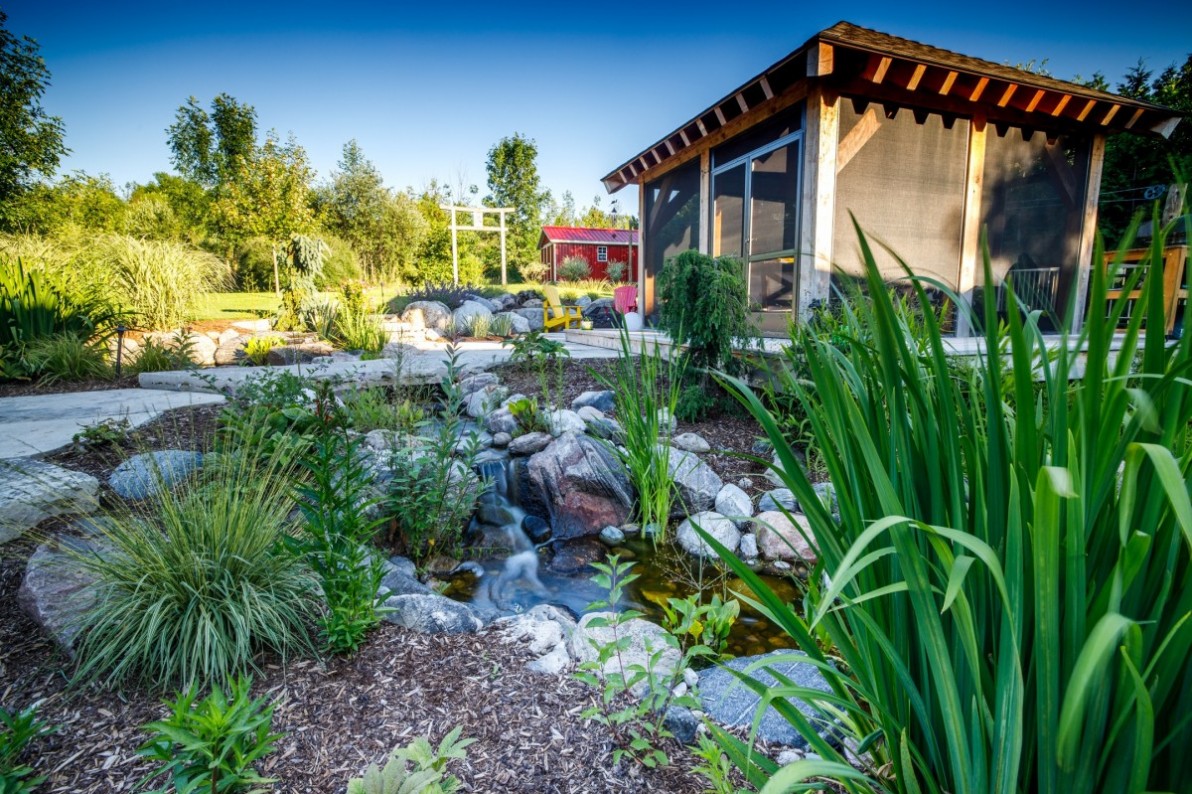Recognize the Relevance of Lasting Practices in Modern Landscape Design Solutions
Sustainable methods in modern-day landscape design are significantly identified for their necessary role in environmental conservation. By executing environment-friendly methods, landscape design experts can improve biodiversity and decrease their ecological impact. This approach not just boosts building aesthetics yet additionally promotes community wellness. As the demand for greener remedies grows, the question arises: just how can these lasting methods reshape the future of landscape design and our relationship with nature?
The Role of Lasting Landscaping in Environmental Preservation
While numerous might forget the relevance of landscaping in environmental preservation, sustainable landscaping methods play a necessary duty in advertising environmental equilibrium. By prioritizing native plants and minimizing water usage, these techniques assist maintain regional biodiversity and minimize the pressure on water resources. In addition, sustainable landscape design can improve soil wellness with organic practices, which promotes a more resistant ecosystem.Moreover, integrating permaculture concepts improves land performance while decreasing ecological effect. This method encourages using natural parasite control and decreases reliance on chemical fertilizers, thus shielding bordering communities. Landscape design that concentrates on sustainability likewise adds to carbon sequestration, assisting to reduce climate adjustment effects.Furthermore, green landscaping develops environments for wildlife, promoting a varied variety of varieties. By participating in sustainable practices, landscaping companies not only beautify spaces but additionally actively take part in the larger initiative to safeguard the atmosphere for future generations.
Benefits of Eco-Friendly Practices for Landscape Design Professionals
Environment-friendly methods in landscape design deal countless advantages for specialists in the area - landscaping st louis. These approaches not just add to a minimized environmental impact yet likewise boost home value and cause long-lasting expense savings. By embracing lasting approaches, landscaping experts can create a much more viable future for both their organizations and the world
Lowered Ecological Influence
As landscape design professionals increasingly take on environmentally friendly techniques, they contribute significantly to lowering the environmental impact of their services. Applying lasting techniques such as natural plant foods, indigenous plant choice, and effective watering systems lessens making use of damaging chemicals and saves water resources. These methods not just boost dirt health and wellness however additionally sustain local biodiversity by creating environments for wild animals. By prioritizing the usage of renewable energies and minimizing waste, landscaping experts can significantly reduce their carbon impact. In addition, incorporating green technologies, such as solar-powered equipment, even more minimizes dependence on nonrenewable fuel sources. Generally, these green methods promote a much healthier ecological community, demonstrating the important role that sustainable landscape design plays in environmental stewardship.
Improved Residential Property Value
Purchasing lasting landscape design methods can greatly improve building value, with studies showing that homes with well-designed environment-friendly areas can see a boost of as much as 15% in market worth. Green landscapes not just draw in prospective customers but additionally produce a lasting impression that highlights a commitment to environmental stewardship. Functions such as indigenous plants, water-efficient watering systems, and permeable paving contribute to visual appeal while reducing maintenance costs. Furthermore, residential properties with lasting landscape design frequently have lower water consumption and energy costs, including in their appearance. As recognition of environment adjustment and sustainability increases, customers significantly prioritize homes that show eco-conscious values, making sustainable landscaping a strategic investment for residential or commercial property owners seeking to maximize their return.
Long-Term Price Savings
Lasting landscape design techniques supply significant long-lasting expense savings for professionals in the industry. By making use of indigenous plants and drought-resistant landscaping, professionals can decrease water use and reduced irrigation expenses. Additionally, utilizing natural plant foods and insect control approaches lessens chemical acquisitions and advertises healthier soil, causing minimized maintenance expenses in time. Carrying out effective energy sources, such as solar-powered lighting, additionally decreases functional expenses. Lasting techniques commonly lead to less repairs and replacements due to the usage of sturdy products and designs that stand up to environmental obstacles. By investing in environmentally friendly techniques, landscaping experts can not just boost their service offerings yet additionally appreciate continuous financial savings that add to their overall profitability and sustainability in a competitive market.

Water Conservation Strategies in Landscape Design
Effective water preservation methods are essential in landscape design, especially in regions dealing with water deficiency. One popular technique is the execution of xeriscaping, which uses drought-resistant plants and minimizes the demand for additional watering. In addition, employing drip watering systems can considerably minimize water waste by providing wetness directly to the plant roots. Rain harvesting is an additional reliable method, permitting home owners to collect and keep rainwater for landscape use. Soil wetness sensors can even more boost water effectiveness by checking soil conditions and notifying irrigation routines. Mulching is likewise beneficial, as it helps retain dirt moisture while subduing weeds. Landscape developers Bonuses are encouraged to develop shape gardens that advertise natural water drain and reduce runoff. By adopting these water conservation techniques, landscaping solutions can add to lasting methods while ensuring that plant thrives also in water-limited environments.
Advertising Biodiversity Via Indigenous Plant Choice
A diverse selection of indigenous plants can considerably boost biodiversity in landscape design tasks. By selecting plants that are indigenous to a particular region, landscapers can create settings that foster a balance of ecological communities. Indigenous plants are adapted to neighborhood climate conditions and soil types, calling for less water and upkeep contrasted to non-native varieties. This adjustment encourages the visibility of indigenous wildlife, such as pollinators, birds, and helpful bugs, which count on these plants for food and habitat.Furthermore, native plants play a crucial function in dirt health by minimizing erosion and enhancing nutrition cycling. By advertising a range of species, landscapers can create durable landscapes that are better furnished to withstand insects and conditions. Consequently, this technique sustains the overall health and wellness of the atmosphere, adding to sustainability. Emphasizing native plant option not only enhances spaces but additionally grows environmental stability, making it a considerable aspect of contemporary landscape design methods.
Waste Decrease Approaches in Landscape Upkeep
Carrying out waste reduction techniques in landscape upkeep can substantially decrease ecological impact while making the most of source performance. One reliable technique includes composting organic waste produced throughout maintenance tasks, such as lawn clippings and pruning debris. This technique not just diverts waste from land fills but also improves soil health and wellness. In enhancement, utilizing compost successfully can reduce the demand for chemical fertilizers and irrigation, thereby preserving resources.Another method is to embrace precision landscaping techniques, which concentrate on targeted applications of water and nutrients based on certain plant needs. This decreases unnecessary waste and improves plant health and wellness. Applying a routine upkeep routine can likewise decrease over-pruning and excessive waste generation. Picking sturdy materials for landscape design tasks assurances longevity, eventually decreasing the frequency of substitutes. Collectively, these approaches contribute to a much more sustainable approach in landscape maintenance, cultivating a healthier ecological community while minimizing general waste production.
The Visual Impact of Sustainable Landscape Design
While typical landscaping usually focuses on aesthetics over ecological factors to consider, sustainable landscape design harmonizes elegance with ecological obligation (Landscaping St. Louis Missouri). This approach welcomes native plants, which not only grow in regional conditions however additionally sustain local wild animals, enhancing the total visual allure of a landscape. By using natural materials and environment-friendly style strategies, sustainable landscape design produces dynamic areas why not try here that reflect the all-natural environment.Furthermore, the consolidation of official source components such as rain gardens and permeable paving not only improves aesthetics but also adds to reliable water administration. Using sustainable practices can result in one-of-a-kind and inviting outside rooms that urge biodiversity and foster a feeling of place.Ultimately, sustainable landscape design goes beyond simple visual charm; it grows a recognition for nature while advertising ecological stewardship. This combination of beauty and sustainability not just enhances the landscape however additionally inspires a better link in between people and their environment
Community Interaction and Education And Learning in Lasting Practices
Sustainable landscaping not just enhances the visual charm of outdoor spaces yet additionally acts as a platform for area interaction and education and learning. Via workshops and neighborhood efforts, landscape design services can foster a deeper understanding of lasting methods amongst neighborhood members. These programs commonly emphasize the relevance of indigenous plants, water preservation, and natural gardening techniques, allowing participants to obtain hands-on experience.Moreover, neighborhood yards play an important function in advertising sustainability while providing a common space for communication. Such campaigns encourage partnership and the exchange of ideas, producing a sense of possession and duty amongst individuals. By incorporating educational components right into their services, landscaping experts can effectively link the space between environmental stewardship and neighborhood involvement. Ultimately, this engagement not just cultivates a more enlightened public however also enhances the cumulative commitment to lasting techniques, ensuring that these principles are upheld for future generations.
Frequently Asked Concerns
What Are the Prices Related To Carrying Out Lasting Landscaping Practices?
The prices related to implementing lasting landscaping practices often consist of initial financial investments in environmentally friendly products, recurring maintenance costs, and possible training for personnel. However, lasting cost savings and environmental benefits can surpass these in advance expenses.

Exactly How Can Property Owners Start With Sustainable Landscaping in your home?
House owners can begin lasting landscape design by examining their yard, selecting indigenous plants, carrying out effective irrigation systems, composting organic waste, minimizing chemical usage, and integrating compost to keep dampness, eventually advertising an environment-friendly exterior environment.
Are There Certifications for Sustainable Landscape Design Specialists?
Numerous accreditations exist for lasting landscape design professionals, including the Association of Professional Landscape Designers' certification and the Sustainable Sites Campaign. These certifications highlight eco-friendly techniques, advertising eco-friendly landscape design strategies and improving professional integrity within the industry.
Exactly How Does Climate Adjustment Affect Landscape Design Practices?
Environment change considerably influences landscaping practices by altering plant growth patterns, increasing bug populations, and necessitating the usage of drought-resistant flora. As a result, landscaping companies should adjust their approaches to ensure sustainable and resistant outside settings.
What Plant kingdom Are Best for Low-Maintenance Sustainable Gardens?
The most effective plants for low-maintenance sustainable yards consist of native types, succulents, and drought-resistant varieties. St. Louis MO landscaper. These plants call for minimal water, grow in neighborhood conditions, and assistance neighborhood ecological communities, developing a resilient and eco-friendly yard